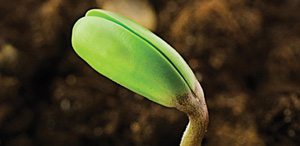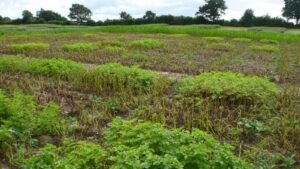The Global Crop Diversity Trust urges the industry to educate people on the power of plant breeding.
Recently I was being interviewed over the phone by a journalist and was trying to explain why crop diversity is important. “It’s the raw material for plant breeding,” I intoned.
Silence on the other end of the line.
Then the young woman, whispered “plants breed?” I had never heard anyone take so long to say the word “breed.” There was a stunned almost horrified edge to her voice.
My first thought was “didn’t your parents talk to you about all this?” Or maybe a high school biology teacher? Then it dawned on me. She was dealing with a double shock. First, that plants breed. And second, that there are plant breeders!
Help Needed
It’s summer in Rome. Not that long ago I was walking to work on a carpet of pollen. It coated everything. Sidewalks, terraces, cars, everything. A plant orgy all around me. Street sweepers assembled piles of the stuff and carted it away.
The young journalist who called to interview me and got more than she bargained for is probably not so different from many of my neighbors here in Rome. They endure the pollen season—unavoidable evidence of plants breeding—without knowing or asking what’s going on. And, when they shop at the local market and bring home different varieties of apples and peaches and tomatoes, they don’t spend too much time thinking about the sex that lay behind those fruits or the development of the different varieties.
When it comes to sex, the difference between wild plants and our domesticated crops is that the latter need help. Yes, help.
Farmers replant their crops every year either from saved or purchased seeds. Natural selection does not take place quite the same way for crops as it might for worms or weeds. It is mediated and overseen by people.
Professional plant breeders decide which plants will be used to fertilize the others. They do so with a goal in mind: producing a new variety with characteristics drawn from each of the parents. If my young interviewer is reading this, here’s a reminder: it’s like arranging the mating of a poodle and a golden retriever to produce a big friendly dog that doesn’t shed its fur all over the house. In other words, my family’s dog, Billy.
With hundreds of pests and diseases striking wheat and with this crop produced in virtually every country and thus in countless different environments, one can easily understand that wheat needs a hand. A breeder! In far too many countries, however, that person does not exist.
When a virulent new wheat disease burst on the scene in Uganda in 1999, that country had no wheat breeders. The disease has spread to the Near East and is headed towards the wheat growing regions of South Asia. A handful of genes that provide resistance have been located.
They now need to be incorporated, i.e. bred, into new varieties. Not one or two new varieties, but into all the different varieties tailored to all the diverse places where wheat is grown on the planet.
Wheat breeders are justifiably alarmed. If the disease strikes before resistant varieties are developed and deployed, losses of up to 80 percent can be expected. So the stakes are high, which is what makes plant breeding and plant breeders so important.
Indeed, investments in plant breeding have languished or even declined, while the number of hungry has climbed over a billion. There’s a connection.
As much as we love food, we take its production for granted. “It is no doubt a curse that we do not properly value what has been freely given as long as we are its daily beneficiaries,” as Robert Pogue Harrison observed.
As a youngster I accompanied my maternal grandmother each fall on a visit to the agricultural experiment station for western Tennessee, in the U.S. There she surveyed row after row of new soybean, cotton and corn varieties with her own eyes. She asked questions about their characteristics. Did they have this or that resistance? How did they stand up to the heat? What yield might she expect?
My grandmother understood plant breeding and realized the value of having new crop varieties that kept pace with the enemy (in those days her nemesis was a tiny insect that targeted her cotton).
It strikes me now that she was better armed for the struggle back in the 1950s than millions of farmers are in Africa or almost anywhere in the developing world today. There was a system, a pipeline, delivering crop improvements and solutions.
In many countries, particularly in Africa, you could round up all the plant breeders and put them in a single mini-van for a trip to the fields. There are that few involved. FAO’s Global Partnership Initiative for Plant Breeding Capacity Building has assembled the sad statistics.
In country after country, major crops lack a single breeder. Thus no new varieties are produced and offered to farmers. Last year’s variety—even last decade’s variety—competes against this year’s pest, disease and climate. It’s not a fair match. The few plant breeders that toil away do so against heavy odds in order to serve a huge clientele.
One of the most reliable ways of bettering those odds is to increase the diversity our breeders can access. Just as our domesticated crops need help to breed, plant breeders and farmers need help to do their breeding. They require a rich store of crop diversity, the richer the better, with which to practice their art.
Our singular job at the Trust is to help make that plant breeding possible—and food security more likely—by conserving the required crop diversity and making it available for breeding all around the world.
In our spare time we shock innocent young journalists.
Editor’s Note: Reprinted with permission from the Global Crop Diversity Trust.
Where on the Web
This article is part of a series produced by the Global Crop Diversity Trust. To find out more about the Trust and sign up to receive these articles regularly, please visit www.croptrust.org.













